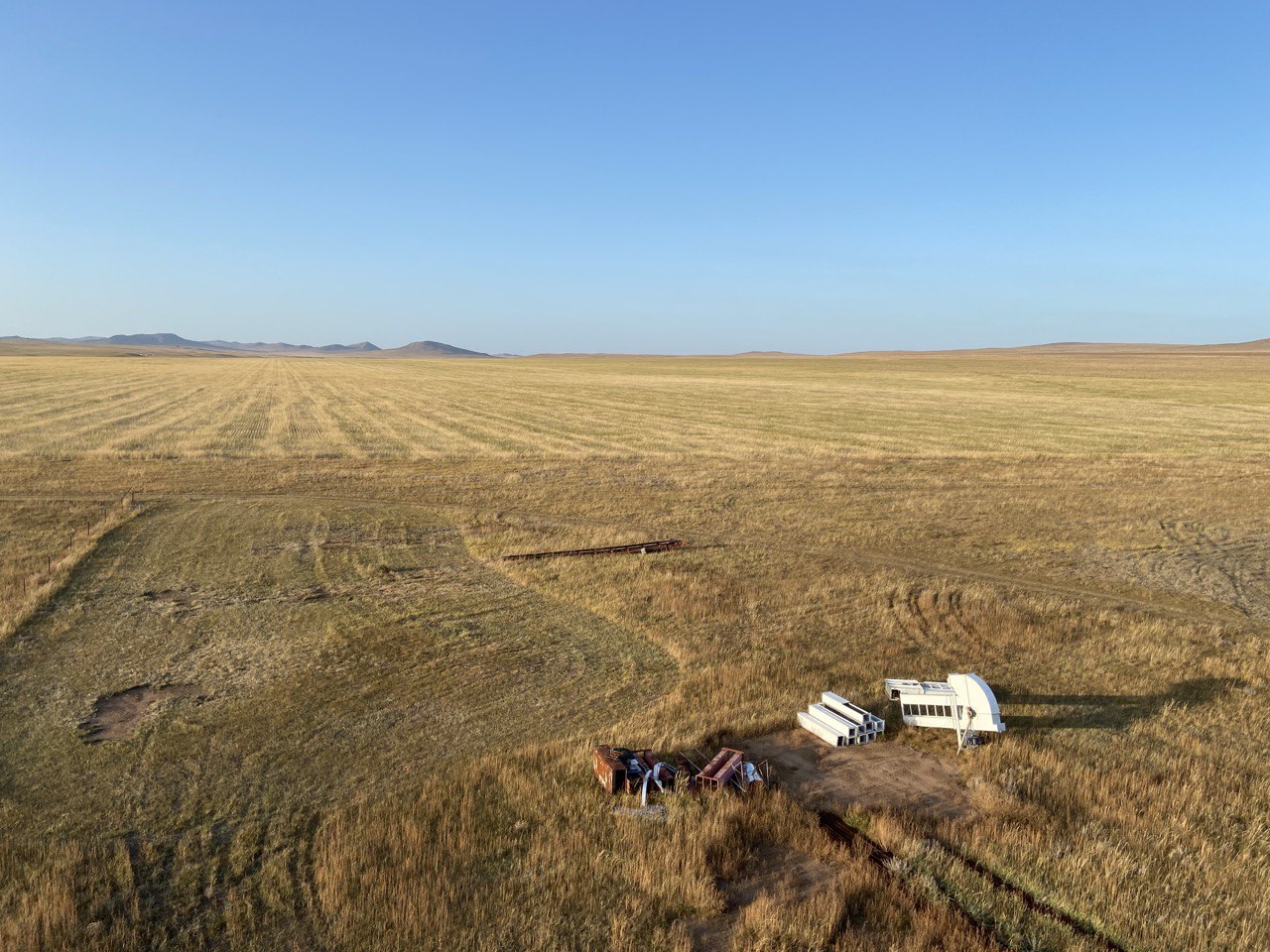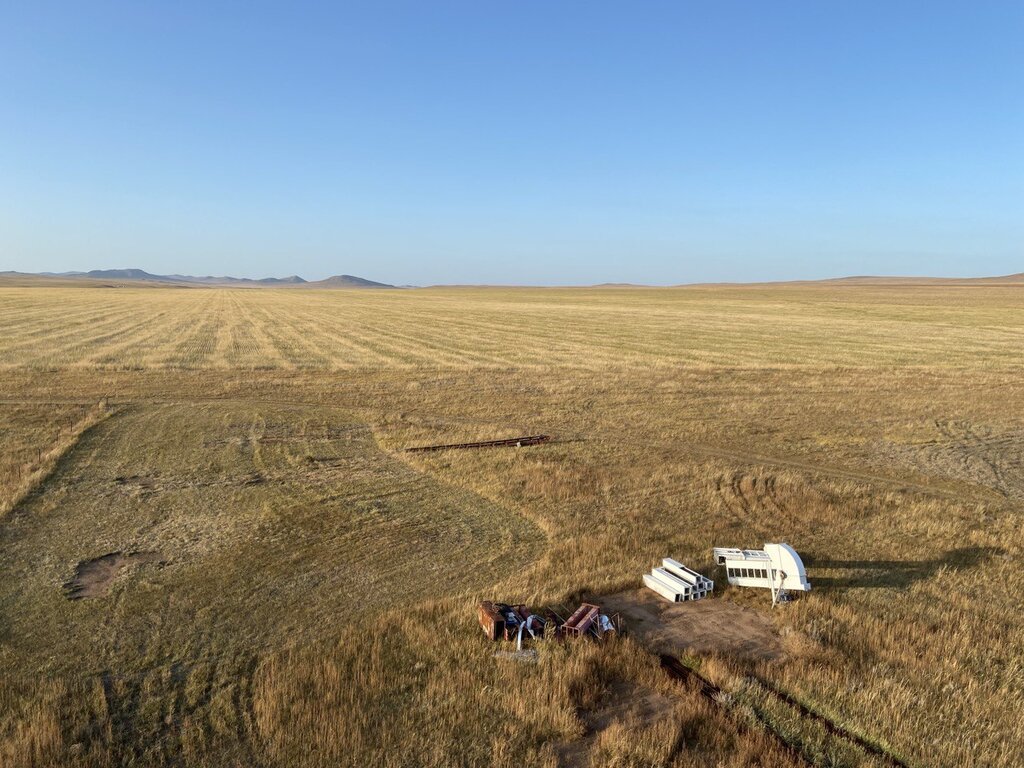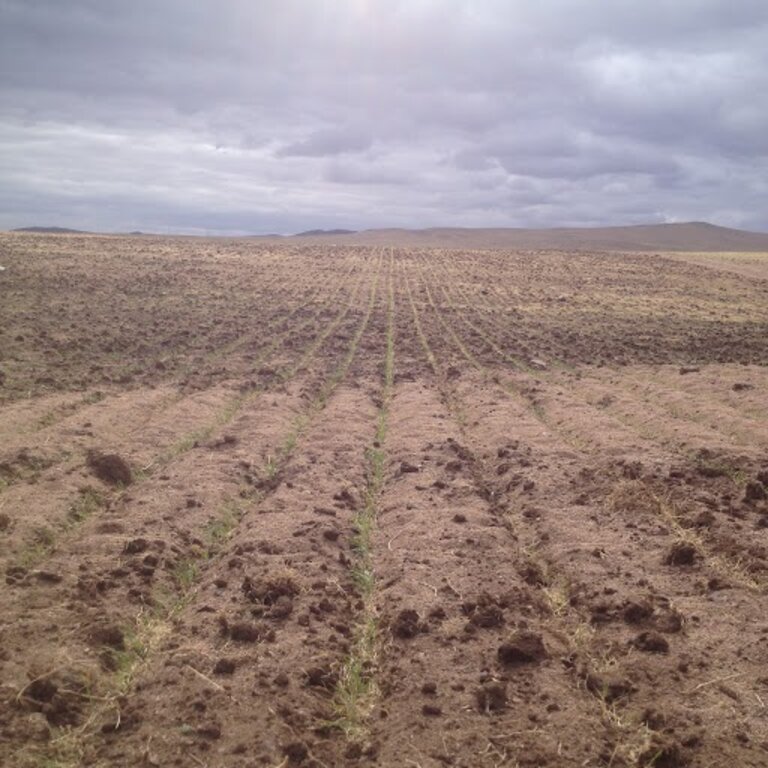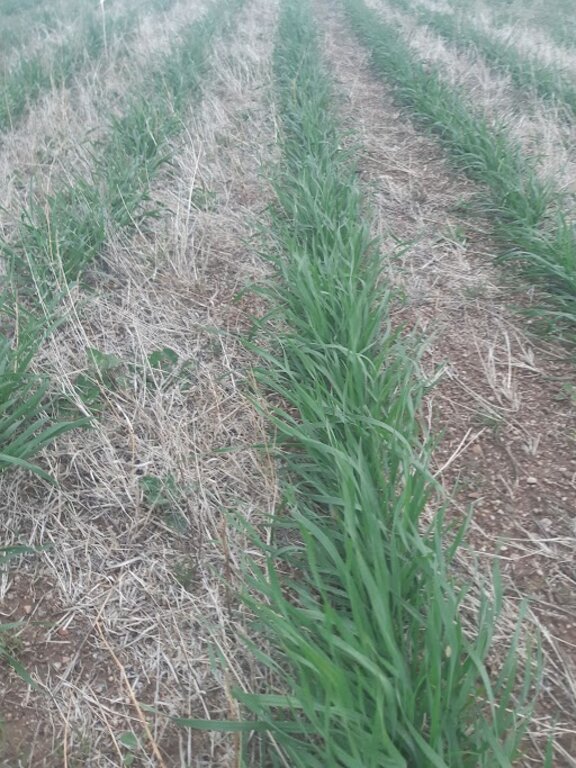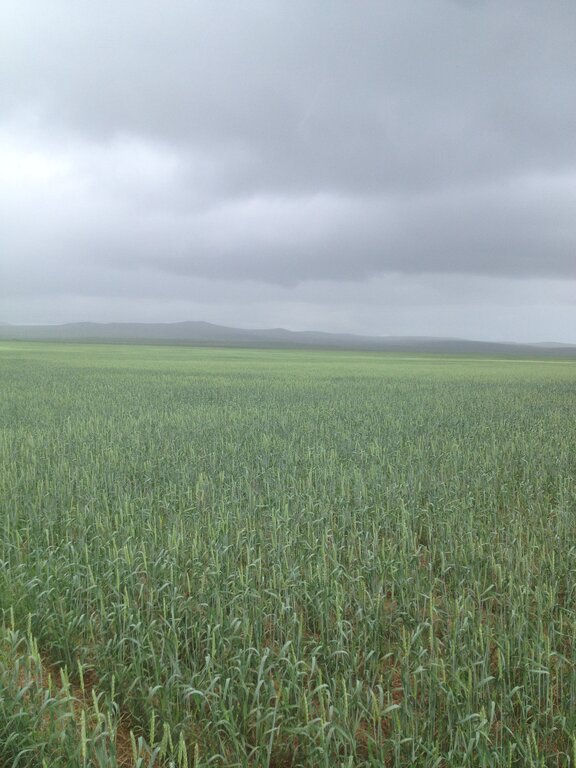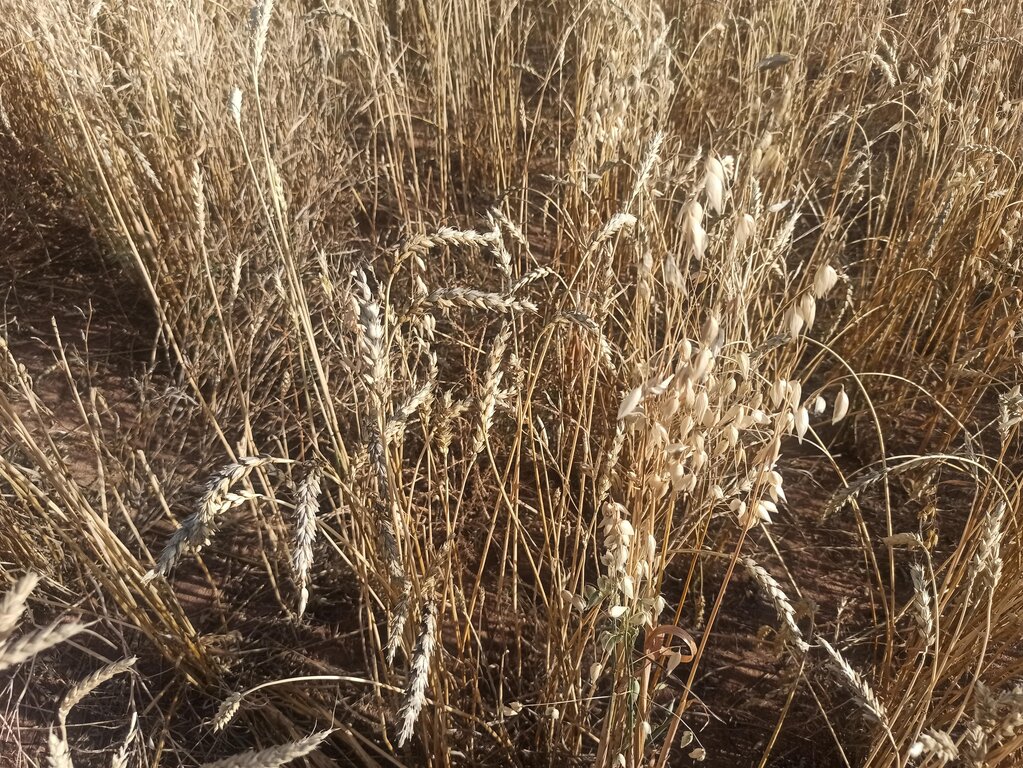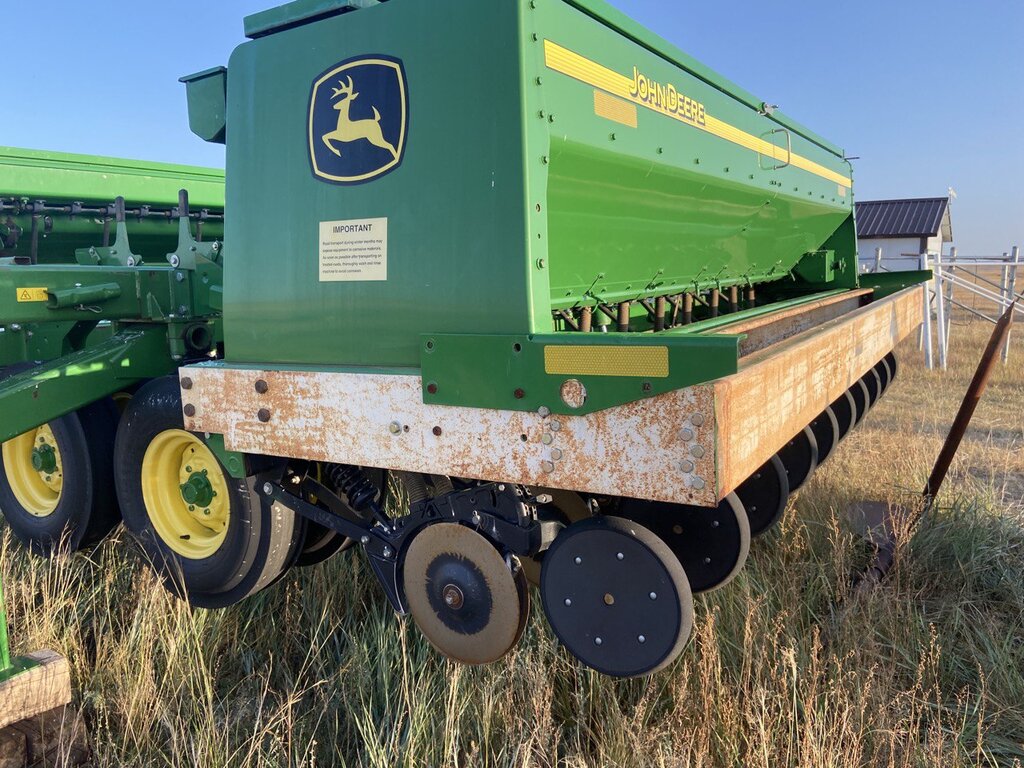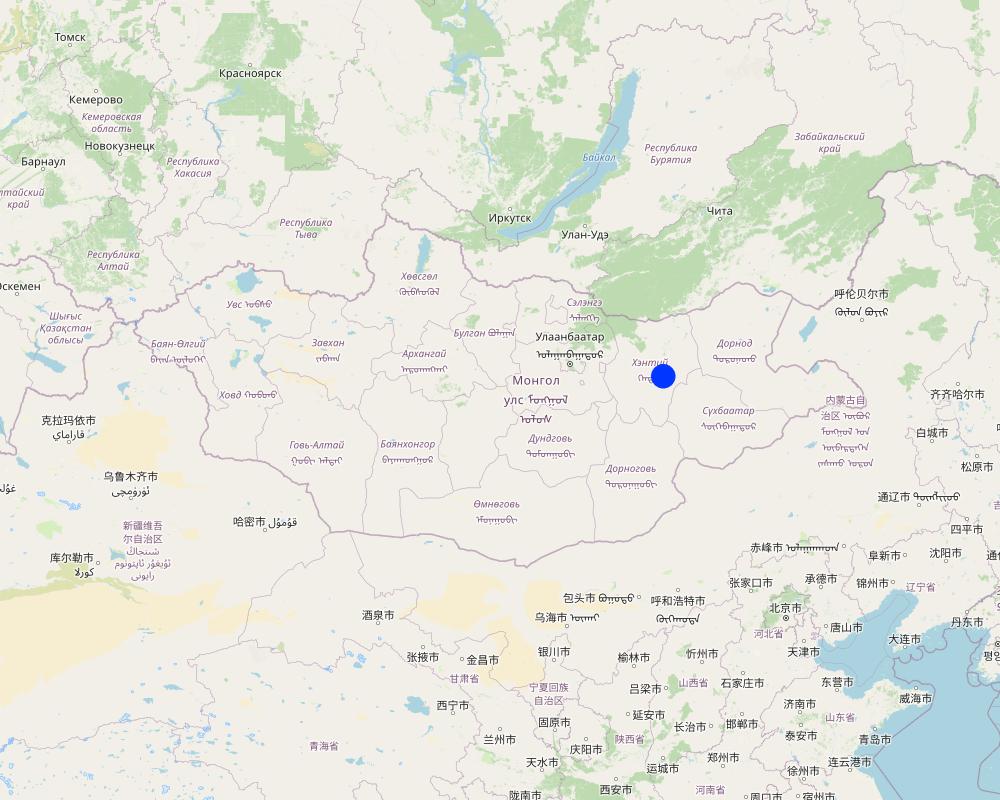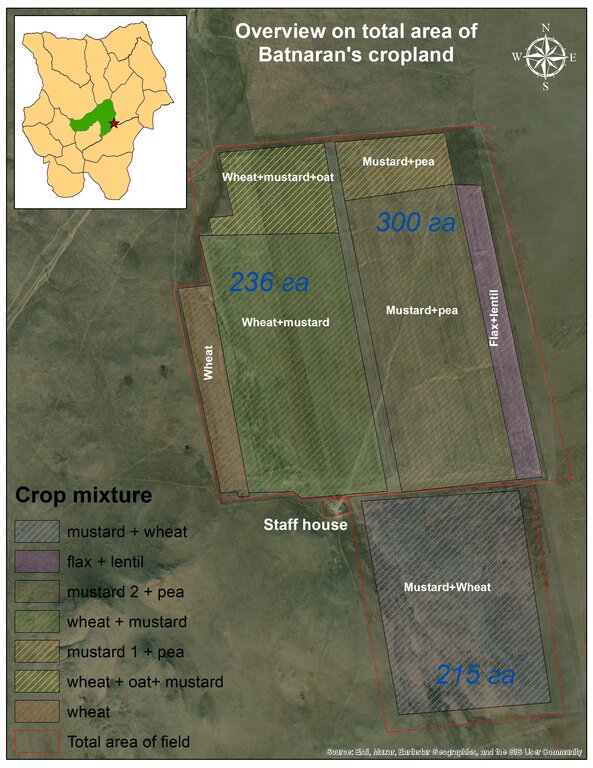Conservation agriculture to restore abandoned cropland [มองโกเลีย]
- ผู้สร้างสรรค์:
- การอัพเดท:
- ผู้รวบรวม: Otgontsetseg Davaanyam
- ผู้เรียบเรียง: Mandakh Nyamtseren
- ผู้ตรวจสอบ: Rima Mekdaschi Studer
Khurs Khamgaalliin gazar tarialan
technologies_6938 - มองโกเลีย
ดูส่วนย่อย
ขยายทั้งหมด ย่อทั้งหมด1. ข้อมูลทั่วไป
1.2 รายละเอียดที่ติดต่อได้ของผู้รวบรวมและองค์กรที่เกี่ยวข้องในการประเมินและการจัดเตรียมทำเอกสารของเทคโนโลยี
วิทยากรหลัก
ผู้ใช้ที่ดิน:
Batdeleg Batnaran
Khentiin Tarialan LLC
มองโกเลีย
ชื่อของโครงการซึ่งอำนวยความสะดวกในการทำเอกสารหรือการประเมินเทคโนโลยี (ถ้าเกี่ยวข้อง)
Decision Support for Mainstreaming and Scaling out Sustainable Land Management (GEF-FAO / DS-SLM)ชื่อขององค์กรซึ่งอำนวยความสะดวกในการทำเอกสารหรือการประเมินเทคโนโลยี (ถ้าเกี่ยวข้อง)
Mongolian Academy of Sciences, Institute of Geography and Geoecology (IGG) - มองโกเลีย1.3 เงื่อนไขการใช้ข้อมูลที่ได้บันทึกผ่านทาง WOCAT
ผู้รวบรวมและวิทยากรหลักยอมรับเงื่อนไขเกี่ยวกับการใช้ข้อมูลที่ถูกบันทึกผ่านทาง WOCAT:
ใช่
1.4 การเปิดเผยเรื่องความยั่งยืนของเทคโนโลยีที่ได้อธิบายไว้
เทคโนโลยีที่ได้อธิบายไว้นี้เป็นปัญหาของความเสื่อมโทรมโทรมของที่ดินหรือไม่ จึงไม่ได้รับการยอมรับว่าเป็นเทคโนโลยีเพื่อการจัดการที่ดินอย่างยั่งยืน:
ไม่ใช่
แสดงความคิดเห็น:
This technology is a SLM technology, because it returned abandoned land to productive agricultural land while building up soil health.
1.5 Reference to Questionnaire(s) on SLM Approaches (documented using WOCAT)
2. การอธิบายลักษณะของเทคโนโลยี SLM
2.1 การอธิบายแบบสั้น ๆ ของเทคโนโลยี
คำจำกัดความของเทคโนโลยี:
This technology aimed to restore abandoned cropland which was used for crop and fodder production during the 1970s-1980s. Since 2016, the farmer applied conservation agriculture and mixed cropping to reduce land degradation, revive cropping practices, increase land productivity for agriculture and enhance soil health.
2.2 การอธิบายแบบละเอียดของเทคโนโลยี
คำอธิบาย:
The land in Kherlen soum, Khentii province, spanning 500 hectares, was used for crop production and later for producing fodder for livestock. However, since 1984, it has been left abandoned. To rehabilitate the area and revive cropland, conservation agriculture combined with mixed cropping was introduced in 2014.
Mixed cropping encompasses various agrotechnical practices that involve the cultivation of different crops together, making use of their ability to interact with each other. The aim is to sustain crop yield in regions with limited moisture, protect the soil surface, regulate soil moisture levels, and enhance the availability of micro and macro-nutrients. In Kherlen soum, Khentii province, mixed cropping was implemented by planting seed mixtures of different proportions, taking into consideration the specific requirements and differences among various crops. Presently, annual crops such as mustard, peas, Cape rice, and wheat, rye along with rapeseeds, are successfully cultivated mixed and/or in rotation in the area.
Conservation agriculture in soil protection agriculture offers several advantages, including the enhancement of soil, its resilience to external factors such as erosion by wind, regulation of soil fertility and microorganism populations, avoidance of highly toxic substances in agriculture, and increased productivity. One significant aspect of conservation agriculture is using no-till and direct sowing techniques to minimize soil disturbance. During harvesting, only the crop heads are collected, while the remaining rootsystems and stems are left in and above the soil contributing to increasing soil organic matter. Other residues and parts of plants, such as straw/ stalks and leaves, are shredded and spread across the field to reduce soil moisture evaporation and protect it from the sun and wind. Soil erosion by wind can be mitigated by covering the soil as much and long as possible either by leaving the crop residues on the soil and/or including cover crops into crop rotations. Furthermore, this technology improves the soil health and microenvironment/ microclimate.
To initiate and implement this technology, the land user leased most of his land through a proposal, aimed at improving the soil quality of abandoned land, to the local government, and also purchased a certain amount of land through a land auction announced on the government website. Initial preparation of land for sowing consisted of removing stones from the field and spraying herbicides to get rid of weeds and their seeds. A minimal dose of herbicides with low toxicity is used to control the growth and spread of weed plants commonly found in abandoned fields. Later on mustard was incorporated into mixed cropping and rotations suppressing the growth of weed.
In the first year, the farmer planted a mixture of mustard, oilseed rape and lucerne to enhance soil penetration and break up compacted soil, as well as wheat in a 40 cm strip on stony soil with low fertility. First few years 2014-2018), the farmer didn’t harvest all the yields to keep the soil covered and improve the soil quality.
In 2019 the farmer built a fence to protect against grazing and yields significantly improved. Moreover, various equipment such as direct seeder for no till or minimum tillage crop cultivation, combine harvester, tractor, herbicide spraying machine and seed sorting machines to improve the quality of produce for the market (clean and separate seeds of different sizes and different types of crops) were bought with a bank loan.
A comprehensive knowledge of the interactions and symbiotic relationships between different crops is also essential to plan for crop mixtures and rotations. Crop morphology such as root system, competition for nutrients and water should be considered. Mustard-pea mixture facilitates harvesting as pea is difficult to harvest in monoculture and mustard can provide biological weed control.
He divided the land / field into 12 plots, which were planted with different crop mixtures and in rotation, maintaining soil fertility, limiting pests and diseases, and increasing crop yields. Legumes can improve soil fertility by adding nitrogen to the soil. The farmer practiced five-field rotation in his cropland using legumes including pea, bean, lentils and alfalfa. The rotation plan depends on climate conditions.
The levels of potassium and phosphorous in the soil were monitored and regularly measured. Only when a deficit occurred the land user used mineral fertilizers.
According to farmers who practice conservation agriculture and mixed farming, these technologies effectively maintains soil stability, ensuring its long-term sustainability.
2.3 รูปภาพของเทคโนโลยี
2.5 ประเทศภูมิภาค หรือสถานที่ตั้งที่เทคโนโลยีได้นำไปใช้และได้รับการครอบคลุมโดยการประเมินนี้
ประเทศ:
มองโกเลีย
ภูมิภาค/รัฐ/จังหวัด:
Khentii province
ข้อมูลจำเพาะเพิ่มเติมของสถานที่ตั้ง :
Kherlen soum, Takhilgat bag
ระบุการกระจายตัวของเทคโนโลยี:
- กระจายไปอย่างสม่ำเสมอในพื้นที่
If the Technology is evenly spread over an area, specify area covered (in km2):
8.0
If precise area is not known, indicate approximate area covered:
- 1-10 ตร.กม.
Is/are the technology site(s) located in a permanently protected area?
ไม่ใช่
แสดงความคิดเห็น:
The area is not a part of the permanently protected area.
Map
×2.6 วันที่การดำเนินการ
ระบุปีที่ใช้:
2014
ถ้าไม่รู้ปีที่แน่นอน ให้ระบุวันที่โดยประมาณ:
- น้อยกว่า 10 ปี (ไม่นานนี้)
2.7 คำแนะนำของเทคโนโลยี
ให้ระบุว่าเทคโนโลยีถูกแนะนำเข้ามาอย่างไร:
- ด้วยการริเริ่มของผู้ใช้ที่ดินเอง
- ในช่วงการทดลองหรือการทำวิจัย
ความคิดเห็น (ประเภทของโครงการ เป็นต้น) :
The farmer planted mustard, rapeseed, and alfalfa in rotation and mixture based on national and international experiences and research on conservation agriculture. These plants have taproot systems that penetrate the soil, enhance water uptake from lower soil depth and make the hardpan soil more porous. After implementing this technology, the land user observed and monitored the field himself. He observed that the retention of soil moisture has increased, soil erosion has significantly decreased, and biological diversity, including microorganisms, insects, and birds, has also increased due to the presence of cover plants.
3. การจัดประเภทของเทคโนโลยี SLM
3.1 วัตถุประสงค์หลักของเทคโนโลยี
- ปรับปรุงการผลิตให้ดีขึ้น
- ลด ป้องกัน ฟื้นฟู การเสื่อมโทรมของที่ดิน
- รักษาสภาพหรือปรับปรุงความหลากหลายทางชีวภาพ
- ปรับตัวเข้ากับการเปลี่ยนแปลงภูมิอากาศของโลก สภาพภูมิอากาศที่รุนแรงและผลกระทบ
- สร้างผลกระทบทางด้านเศรษฐกิจที่เป็นประโยชน์
3.2 ประเภทของการใช้ที่ดินในปัจจุบันที่ได้นำเทคโนโลยีไปใช้
Land use mixed within the same land unit:
ไม่ใช่

พื้นที่ปลูกพืช
- การปลูกพืชล้มลุกอายุปีเดียว
Annual cropping - Specify crops:
- cereals - barley
- cereals - oats
- cereals - wheat (spring)
- fibre crops - flax, hemp, other
- fodder crops - alfalfa
- legumes and pulses - lentils
- legumes and pulses - peas
- oilseed crops - sunflower, rapeseed, other
- seed crops - sesame, poppy, mustard, other
Annual cropping system:
Wheat or similar rotation with hay/pasture
จำนวนของฤดูเพาะปลูกต่อปี:
- 1
ระบุ:
Plant seeds are sown in April and harvested in August to September.
Is intercropping practiced?
ไม่ใช่
Is crop rotation practiced?
ใช่
ถ้าใช่ ระบุ:
Entire field/ area was divided into 5 main sections, allowing to practice crop rotation. In general, a rotation consists of cereal crops follow by broad leaved crops. Within one plot, the land user decides the mixture of crop depending on the weather condition in the year. If a mixture of mustard-wheat was planted in this year, another crop mixture should be planted in the next year.
3.3 Has land use changed due to the implementation of the Technology?
Has land use changed due to the implementation of the Technology?
- Yes (Please fill out the questions below with regard to the land use before implementation of the Technology)
Land use mixed within the same land unit:
ไม่ใช่

ที่ดินที่ไม่ให้ผลผลิต
ระบุ:
Abandoned land
ข้อสังเกต:
Monoculture crops were planted in the area during the socialist period, and it was left unused and abandoned since 1986. Therefore, the productivity and fertility of the land decreased.
3.4 การใช้น้ำ
การใช้น้ำของที่ดินที่มีการใช้เทคโนโลยีอยู่:
- จากน้ำฝน
แสดงความคิดเห็น:
Irrigation systems are not used throughout the field.
3.5 กลุ่ม SLM ที่ตรงกับเทคโนโลยีนี้
- ระบบหมุนเวียน (การปลูกพืชหมุนเวียน การพักดิน การเกษตรแบบไร่เลื่อนลอย)
- การปรับปรุงดิน / พืชคลุมดิน
- การรบกวนดินให้น้อยที่สุด
3.6 มาตรการ SLM ที่ประกอบกันเป็นเทคโนโลยี

มาตรการจัดการพืช
- A1: พืช/สิ่งปกคลุมดิน
- A2: อินทรียวัตถุในดิน/ความอุดมสมบูรณ์ในดิน
- A3: การรักษาหน้าดิน
- A5: การจัดการเมล็ดพันธุ์ การปรับปรุงพันธุ์
- A6: Residue management
A3: Differentiate tillage systems:
A 3.1: No tillage
A6: Specify residue management:
A 6.4: retained

มาตรการอนุรักษ์ด้วยการจัดการ
- M1: การเปลี่ยนรูปแบบของการใช้ประโยชน์ที่ดิน
แสดงความคิดเห็น:
Abandoned land had been converted into annual cropland. According to the classification of Mongolian Land Unified Fund, land was classified as abandoned land and changed into agricultural land after starting to use it.
3.7 รูปแบบหลักของการเสื่อมโทรมของที่ดินที่ได้รับการแก้ไขโดยเทคโนโลยี

การกัดกร่อนของดินโดยลม
- Et (Loss of topsoil): การสูญเสียดินชั้นบน
- Eo (Offsite degradation effect): ผลกระทบนอกพื้นที่

การเสื่อมโทรมของดินทางด้านเคมี
- Cn (Fertility decline): ความอุดมสมบูรณ์และปริมาณอินทรียวัตถุในดินถูกทำให้ลดลงไป (ไม่ได้เกิดจากสาเหตุการกัดกร่อน)

การเสื่อมโทรมของดินทางด้านชีวภาพ
- Bc (Reduction of vegetation cover): การลดลงของจำนวนพืชที่ปกคลุมดิน
- Bq (Quantity/biomass decline): การลดลงของปริมาณหรือมวลชีวภาพ
- Bs (Quality and species composition): องค์ประกอบหรือความหลากหลายทางคุณภาพและชนิดพันธุ์ลดลง
แสดงความคิดเห็น:
The soil in the abandoned land became infertile due to water and wind erosion, and thus, there had been a decrease in biodiversity in the soil as well as in plant diversity and productivity.
3.8 การป้องกัน การลดลง หรือการฟื้นฟูความเสื่อมโทรมของที่ดิน
ระบุเป้าหมายของเทคโนโลยีกับความเสื่อมโทรมของที่ดิน:
- ฟื้นฟูบำบัดที่ดินที่เสื่อมโทรมลงอย่างมาก
แสดงความคิดเห็น:
The technology aims to revive the agricultural practice in abandoned cropland, protect the soil from erosion, enhance its moisture and organic matter, and improve biological diversity by planting a variety of plants, thereby allowing opportunities for long-term sustainable use.
4. ข้อมูลจำเพาะด้านเทคนิค กิจกรรมการนำไปปฏิบัติใช้ ปัจจัยนำเข้า และค่าใช้จ่าย
4.1 แบบแปลนทางเทคนิคของเทคโนโลยี
ข้อมูลจำเพาะด้านเทคนิค (แบบแปลนทางเทคนิคของเทคโนโลยี):
This diagram shows how the crop mix was distributed across the field in 2023 (on different plots). Entire field was divided into 5 main sections which are intended for crop rotation and also several small sections which are for ensuring seed source. More than 20 types of crops were planted in the whole field. A five-field rotation is practiced in this cropland with a sequence of cereal grains (wheat, barley, oats, etc.) followed by leafy plants (flax, lentils, peas, mustard, etc.), depending on the climatic conditions of the year. In dry years, the land user prefers to grow cereals and flax, which are more resistant to drought, and then rotate cereals with a mixture of leafy plants the following year. In years with good humidity, on the other hand, a mixture of mustard + peas + oats + lentils is suitable. The advantages of this mixture is to improve soil fertility and to control diseases and pest. In addition, soil remains covered against soil erosion. Inclusion of different crops means also increase in agrobiodiversity.
ผู้เขียน:
Ankhbayar N., Gereltuya G.
วันที่:
02/10/2023
4.2 ข้อมูลทั่วไปเกี่ยวกับการคำนวณปัจจัยนำเข้าและค่าใช้จ่าย
ให้ระบุว่าค่าใช้จ่ายและปัจจัยนำเข้าได้รับการคำนวณอย่างไร:
- ต่อพื้นที่ที่ใช้เทคโนโลยี
ระบุขนาดและหน่วยพื้นที่:
800 ha
อื่นๆ หรือสกุลเงินประจำชาติ (ระบุ):
Tugrik
If relevant, indicate exchange rate from USD to local currency (e.g. 1 USD = 79.9 Brazilian Real): 1 USD =:
3453.0
ระบุค่าเฉลี่ยของค่าจ้างในการจ้างแรงงานต่อวัน:
50000 - 100000 Tugrik
4.3 กิจกรรมเพื่อการจัดตั้ง
| กิจกรรม | Timing (season) | |
|---|---|---|
| 1. | Build fence | before sowing |
| 2. | Prepare (picking stones) and plough land | before sowing |
| 3. | Buy and spray herbicide | before sowing |
| 4. | Purchase tractor | before sowing |
| 5. | Purchase direct seeder | before sowing |
| 6. | Purchase combine harvester | before sowing |
| 7. | Purchase spray machine | before sowing |
| 8. | Purchase seed cleaning machine | before sowing |
| 9. | Purchase stone picker machine | before sowing |
| 10. | Purchase or rent pile machine for fencing | before sowing |
| 11. | Purchase silos | before harvesting |
| 12. | Storage shed | before harvesting |
แสดงความคิดเห็น:
Establishing a fence before the technology is an essential activity to protect from grazing and retain cover plants. The farmer empahsized that it is important to choose materials with good quality for building fence. He used imported fencing material from Canada of which the price was higher than average local market price.
4.4 ค่าใช้จ่ายของปัจจัยนำเข้าที่จำเป็นสำหรับการจัดตั้ง
| ปัจจัยนำเข้า | หน่วย | ปริมาณ | ค่าใช้จ่ายต่อหน่วย | ค่าใช้จ่ายทั้งหมดต่อปัจจัยนำเข้า | %ของค่าใช้จ่ายที่ก่อให้เกิดขึ้นโดยผู้ใช้ที่ดิน | |
|---|---|---|---|---|---|---|
| แรงงาน | Build fence | person | 2.0 | 15000000.0 | 30000000.0 | 100.0 |
| แรงงาน | Spray herbicide | person | 2.0 | 350000.0 | 700000.0 | 100.0 |
| แรงงาน | Sowing | person | 1.0 | 4000000.0 | 4000000.0 | 100.0 |
| แรงงาน | Stone picking | person | 1.0 | 4800000.0 | 4800000.0 | 100.0 |
| อุปกรณ์ | Tractor | piece | 1.0 | 220000000.0 | 220000000.0 | 100.0 |
| อุปกรณ์ | Direct seeder | piece | 1.0 | 224000000.0 | 224000000.0 | 100.0 |
| อุปกรณ์ | Combine harvester | piece | 2.0 | 397000000.0 | 794000000.0 | 100.0 |
| อุปกรณ์ | Agriculture spray machine | piece | 1.0 | 170000000.0 | 170000000.0 | 100.0 |
| อุปกรณ์ | Stone picker machine | piece | 1.0 | 15000000.0 | 15000000.0 | 100.0 |
| อุปกรณ์ | Seed cleaning machine | piece | 3.0 | 35000000.0 | 105000000.0 | 100.0 |
| อุปกรณ์ | Pile machine for fencing | piece | 1.0 | 6900000.0 | 6900000.0 | 100.0 |
| อุปกรณ์ | Silos | tonnes (holding capacity) | 700.0 | 714285.72 | 500000004.0 | 100.0 |
| วัสดุด้านพืช | Seeds first year | tonnes | 70.5 | 4400000.0 | 310200000.0 | 100.0 |
| ปุ๋ยและสารฆ่า/ยับยั้งการเจริญเติบโตของสิ่งมีชีวิต (ไบโอไซด์) | Herbicide | l | 2400.0 | 8000.0 | 19200000.0 | 100.0 |
| วัสดุสำหรับก่อสร้าง | Poles and net for fence | km | 25.0 | 10800000.0 | 270000000.0 | 100.0 |
| อื่น ๆ | Land lease | ha | 800.0 | 500000.0 | 400000000.0 | 100.0 |
| ค่าใช้จ่ายทั้งหมดของการจัดตั้งเทคโนโลยี | 3073800004.0 | |||||
| Total costs for establishment of the Technology in USD | 890182.45 | |||||
แสดงความคิดเห็น:
The implementation of conservation agriculture and mixed cropping was self-funded by land user. For certain initial investments he took a loan from the bank. The fence materials were imported from Canada, for its good quality.
4.5 การบำรุงรักษาสภาพหรือกิจกรรมที่เกิดขึ้นเป็นประจำ
| กิจกรรม | ช่วงระยะเวลา/ความถี่ | |
|---|---|---|
| 1. | Sowing/ direct seeding | April to May per year |
| 2. | Harvesting and separating harvested seeds | once in August to September |
| 3. | Reproducing seed for own use and sowing | after harvest |
| 4. | Spray herbicide | if necessary, once in 2-3 year |
| 5. | Monitoring on plant development (e.g. germination, flowering, maturity) | at each plant development stage |
| 6. | Monitoring soil fertility | once a year, in August |
แสดงความคิดเห็น:
Soil samples are taken and sent to a specialized laboratory for analysis.
4.6 ค่าใช้จ่ายของปัจจัยนำเข้าและกิจกรรมที่เกิดขึ้นเป็นประจำที่ต้องการการบำรุงรักษา (ต่อปี)
| ปัจจัยนำเข้า | หน่วย | ปริมาณ | ค่าใช้จ่ายต่อหน่วย | ค่าใช้จ่ายทั้งหมดต่อปัจจัยนำเข้า | %ของค่าใช้จ่ายที่ก่อให้เกิดขึ้นโดยผู้ใช้ที่ดิน | |
|---|---|---|---|---|---|---|
| แรงงาน | Spray herbicide | person | 2.0 | 1400000.0 | 2800000.0 | 100.0 |
| แรงงาน | Harvesting | person | 4.0 | 1500000.0 | 6000000.0 | 100.0 |
| แรงงาน | Separating seeds | person | 2.0 | 1000000.0 | 2000000.0 | 100.0 |
| แรงงาน | Sowing seeds | person | 2.0 | 1500000.0 | 3000000.0 | 100.0 |
| อุปกรณ์ | Spare parts and maintenance of machines | ha | 800.0 | 10500.0 | 8400000.0 | 100.0 |
| อุปกรณ์ | Spraying machine (fuel) | l/year | 400.0 | 2400.0 | 960000.0 | 100.0 |
| อุปกรณ์ | Sowing machine (fuel) | l/year | 4000.0 | 2400.0 | 9600000.0 | 100.0 |
| อุปกรณ์ | Combine harvesting machine (fuel) | l/year | 4000.0 | 2400.0 | 9600000.0 | 100.0 |
| วัสดุด้านพืช | Seeds | tonne/year | 13.7 | 4400000.0 | 60280000.0 | 100.0 |
| ปุ๋ยและสารฆ่า/ยับยั้งการเจริญเติบโตของสิ่งมีชีวิต (ไบโอไซด์) | Herbicide (different types) | l | 1.0 | 30000.0 | 30000.0 | 100.0 |
| อื่น ๆ | Land use tax | MNT/year | 1.0 | 1900000.0 | 1900000.0 | 100.0 |
| อื่น ๆ | Soil sampling and testing | MNT/year | 1.0 | 830000.0 | 830000.0 | 100.0 |
| ค่าใช้จ่ายทั้งหมดของการบำรุงรักษาสภาพเทคโนโลยี | 105400000.0 | |||||
| Total costs for maintenance of the Technology in USD | 30524.18 | |||||
แสดงความคิดเห็น:
The amount of herbicide used in a given year depends on the type of weed and its distribution. Initially, the land user spent 19 million (2400 litres) on herbicide to prepare the field for cultivation, and the price was relatively low compared to today (8000 MNT on average). But, in 2022, different types of herbicides were bought for different types of weeds distributed in the field and 120 million MNT (1800 litres) were spent because the price became high compared to other years due to the border closure (COVID). But in 2023, only 30 000 MNT (1 litre) was spent on herbicides in the whole field.
The land user and a permanent help receive a monthly salary.
4.7 ปัจจัยสำคัญที่สุดที่มีผลกระทบต่อค่าใช้จ่าย
ปัจจัยสำคัญที่สุดที่มีผลกระทบต่อค่าใช้จ่ายต่างๆ:
Factors that mainly affect the cost are inflation and the MNT exchange rate (mainly relevant when purchasing imported products). In addition, in the event of extreme weather and disastrous conditions, extra labor may be required to mitigate damage.
5. สิ่งแวดล้อมทางธรรมชาติและของมนุษย์
5.1 ภูมิอากาศ
ฝนประจำปี
- < 250 ม.ม.
- 251-500 ม.ม.
- 501-750 ม.ม.
- 751-1,000 ม.ม.
- 1,001-1,500 ม.ม.
- 1,501-2,000 ม.ม.
- 2,001-3,000 ม.ม.
- 3,001-4,000 ม.ม.
- > 4,000 ม.ม.
ระบุปริมาณน้ำฝนเฉลี่ยรายปี (ถ้ารู้) :หน่วย ม.ม.
150.00
ระบุชื่อของสถานีตรวดวัดอากาศที่ใช้อ้างอิงคือ:
Undurkhaan
เขตภูมิอากาศเกษตร
- กึ่งแห้งแล้ง
This region includes a region with harsh cold winters and dry summers. The average annual air temperature is -0.2 celsius, and the difference between day and night temperature ranges from 13 to 15 degrees.
5.2 สภาพภูมิประเทศ
ค่าเฉลี่ยความลาดชัน:
- ราบเรียบ (0-2%)
- ลาดที่ไม่ชัน (3-5%)
- ปานกลาง (6-10%)
- เป็นลูกคลื่น (11-15%)
- เป็นเนิน (16-30%)
- ชัน (31-60%)
- ชันมาก (>60%)
ธรณีสัณฐาน:
- ที่ราบสูง/ที่ราบ
- สันเขา
- ไหล่เขา
- ไหล่เนินเขา
- ตีนเนิน
- หุบเขา
ระดับความสูง:
- 0-100 เมตร
- 101-500 เมตร
- 501-1,000 เมตร
- 1,001-1,500 เมตร
- 1,501-2,000 เมตร
- 2,001-2,500 เมตร
- 2,501-3,000 เมตร
- 3,001-4,000 เมตร
- > 4,000 เมตร
ให้ระบุถ้าเทคโนโลยีได้ถูกนำไปใช้:
- บริเวณแอ่งบนที่ราบ (concave situations)
5.3 ดิน
ค่าเฉลี่ยความลึกของดิน:
- ตื้นมาก (0-20 ซ.ม.)
- ตื้น (21-50 ซ.ม.)
- ลึกปานกลาง (51-80 ซ.ม.)
- ลึก (81-120 ซ.ม.)
- ลึกมาก (>120 ซ.ม.)
เนื้อดิน (ดินชั้นบน):
- หยาบ/เบา (ดินทราย)
เนื้อดินล่าง (> 20 ซ.ม.ต่ำจากผิวดิน):
- ปานกลาง (ดินร่วน ทรายแป้ง)
อินทรียวัตถุในดิน:
- ต่ำ (<1%)
5.4 ความเป็นประโยชน์และคุณภาพของน้ำ
ระดับน้ำใต้ดิน:
5-50 เมตร
น้ำไหลบ่าที่ผิวดิน:
ดี
คุณภาพน้ำ (ที่ยังไม่ได้บำบัด):
เป็นน้ำเพื่อการดื่มที่ดี
Water quality refers to:
both ground and surface water
ความเค็มของน้ำเป็นปัญหาหรือไม่:
ไม่ใช่
กำลังเกิดน้ำท่วมในพื้นที่หรือไม่:
ใช่
บ่อยครั้ง:
เป็นครั้งเป็นคราว
ความคิดเห็นและข้อมูลจำเพาะเพิ่มเติมเรื่องคุณภาพและปริมาณน้ำ:
It depends on intensity of rainfall.
5.5 ความหลากหลายทางชีวภาพ
ความหลากหลายทางชนิดพันธุ์:
- ปานกลาง
ความหลากหลายของแหล่งที่อยู่:
- ต่ำ
ความคิดเห็นและข้อมูลจำเพาะเพิ่มเติมของความหลากหลายทางชีวภาพ:
Based on an animal and plant richness research study, biodiversity in this region is classified as moderate. After the implementation of the technology, more species of insects and birds were found in the fields due to the increase in agrobiodiversity.
5.6 ลักษณะของผู้ใช้ที่ดินที่นำเทคโนโลยีไปปฏิบัติใช้
อยู่กับที่หรือเร่ร่อน:
- อยู่กับที่
แนวทางการตลาดของระบบการผลิต:
- ทำการค้า/การตลาด
รายได้ที่มาจากนอกฟาร์ม:
- < 10% ของรายได้ทั้งหมด
ระดับของความมั่งคั่งโดยเปรียบเทียบ:
- พอมีพอกิน
เป็นรายบุคคล/ครัวเรือน:
- ลูกจ้าง (บริษัท รัฐบาล)
ระดับของการใช้เครื่องจักรกล:
- การใช้เครื่องจักรหรือเครื่องยนต์
เพศ:
- ชาย
อายุของผู้ใช้ที่ดิน:
- วัยกลางคน
ระบุลักษณะอื่นๆที่เกี่ยวข้องของผู้ใช้ที่ดิน:
Khentiin Tarialan LLC is a company with theland user and an aid are employed and with seasonally hired labour.
5.7 Average area of land used by land users applying the Technology
- < 0.5 เฮกตาร์
- 0.5-1 เฮกตาร์
- 1-2 เฮกตาร์
- 2-5 เฮกตาร์
- 5-15 เฮกตาร์
- 15-50 เฮกตาร์
- 50-100 เฮกตาร์
- 100-500 เฮกตาร์
- 500-1,000 เฮกตาร์
- 1,000-10,000 เฮกตาร์
- >10,000 เฮกตาร์
พิจารณาว่าเป็นขนาดเล็ก กลาง หรือขนาดใหญ่ (ซึ่งอ้างอิงถึงบริบทระดับท้องถิ่น):
- ขนาดกลาง
แสดงความคิดเห็น:
Based on standards, the area used by the land user is considered to be a medium-scale.
5.8 กรรมสิทธิ์ในที่ดิน สิทธิในการใช้ที่ดินและสิทธิในการใช้น้ำ
กรรมสิทธิ์ในที่ดิน:
- รัฐ
สิทธิในการใช้ที่ดิน:
- เช่า
สิทธิในการใช้น้ำ:
- รายบุคคล
Are land use rights based on a traditional legal system?
ไม่ใช่
แสดงความคิดเห็น:
Land is rented for a period of 15 years and when duration is over, the contract can be extended. Land users pay land use tax every year. Land use rights for agricultural production was leased by auction.
5.9 การเข้าถึงบริการและโครงสร้างพื้นฐาน
สุขภาพ:
- จน
- ปานกลาง
- ดี
การศึกษา:
- จน
- ปานกลาง
- ดี
ความช่วยเหลือทางด้านเทคนิค:
- จน
- ปานกลาง
- ดี
การจ้างงาน (เช่น ภายนอกฟาร์ม):
- จน
- ปานกลาง
- ดี
ตลาด:
- จน
- ปานกลาง
- ดี
พลังงาน:
- จน
- ปานกลาง
- ดี
ถนนและการขนส่ง:
- จน
- ปานกลาง
- ดี
น้ำดื่มและการสุขาภิบาล:
- จน
- ปานกลาง
- ดี
บริการด้านการเงิน:
- จน
- ปานกลาง
- ดี
6. ผลกระทบและสรุปคำบอกกล่าว
6.1 ผลกระทบในพื้นที่ดำเนินการ (On-site) จากการใช้เทคโนโลยี
ผลกระทบทางด้านเศรษฐกิจและสังคม
การผลิต
การผลิตพืชผล
จำนวนก่อน SLM:
0
หลังจาก SLM:
25 centner/ha
แสดงความคิดเห็น/ระบุ:
It is important to note that crop production is highly dependent on weather conditions. In 2021, when there was enough precipitation, a yield of 25 centner/ha was achieved. However, in 2014-2016, when technology implementation was just starting in severely degraded land and coincided with drought, there were occasions where all yield was lost.
คุณภาพพืชผล
แสดงความคิดเห็น/ระบุ:
Specific weight, indicating seed quality, of grain reached 900 g/l and, gluten content of wheat always meets the requirements of first grade of food.
การผลิตพืชที่ใช้เลี้ยงปศุสัตว์
แสดงความคิดเห็น/ระบุ:
Comparisons between 2018 and 2022 indicate that the average length of the wheat grain head increased and reached 10 - 12 centimeters by 1st July, resulting in a higher yield. Oats and wheat are harvested for fodder production while peas are supplied to chicken farms.
คุณภาพพืชที่ใช้เลี้ยงปศุสัตว์
แสดงความคิดเห็น/ระบุ:
In terms of wheat quality, it is classified into first grade. The protein content of Bayalag variety of peas is 18-20%, starch content is 26-35%.
การเสี่ยงต่อความล้มเหลวในการผลิต
แสดงความคิดเห็น/ระบุ:
We concluded that this technology can overcome any risks related to labor and expenses, because sowing time is different for many types of crops, reducing the amount of expenses and labor load.
ความหลากหลายของผลิตภัณฑ์
จำนวนก่อน SLM:
1
หลังจาก SLM:
20
แสดงความคิดเห็น/ระบุ:
About 20 species of plants are being cultivated.
รายได้และค่าใช้จ่าย
ค่าใช่จ่ายของปัจจัยการผลิตทางการเกษตร
จำนวนก่อน SLM:
9 centner
หลังจาก SLM:
3 centner
แสดงความคิดเห็น/ระบุ:
The amount of seeds used for planting is lower, the seeds can be used for the next year cultivation: The spread of plant diseases / pests and use of pesticides is relatively low. Herbizides and fertilizers are not applied in this technology. Thus, there is no expense on that.
รายได้จากฟาร์ม
หลังจาก SLM:
5 centner
แสดงความคิดเห็น/ระบุ:
The yield is dependent on the climatic conditions of the year. In wheat yield, 3 centners were spent on sowing and 5 centners were obtained for each hectare when the weather was not favorable and precipitation was relatively low. Therefore, the net income is 2 centners in this case.
ภาระงาน
จำนวนก่อน SLM:
4
หลังจาก SLM:
2
แสดงความคิดเห็น/ระบุ:
Sowing time is different for many types of crops, so it does not requires a high number of labor. 2 persons typically work on the entire area throughout the year and, 2 more persons are employed during harvesting.
ผลกระทบด้านสังคมวัฒนธรรมอื่น ๆ
ความมั่นคงด้านอาหาร / พึ่งตนเองได้
SLM หรือความรู้เรื่องความเสื่อมโทรมของที่ดิน
แสดงความคิดเห็น/ระบุ:
Mentorship program for other farmers is organized.
ผลกระทบด้านนิเวศวิทยา
วัฐจักรน้ำหรือน้ำบ่า
การระเหย
แสดงความคิดเห็น/ระบุ:
Due to cover crops and residue left on the soil, it reduces the amount of water evaporation from the soil and keeps the soil moisture .
ดิน
ความชื้นในดิน
แสดงความคิดเห็น/ระบุ:
Cover crops and plant residues left on the soil surface protect against wind erosion, reduces soil water evaporation and improves soil moisture content.
สิ่งปกคลุมดิน
จำนวนก่อน SLM:
0 cm
หลังจาก SLM:
2 cm
แสดงความคิดเห็น/ระบุ:
Before the technology was introduced, the field was barely covered with plants and the topsoil had been severely eroded by the wind, resulting in a loss of fertility and covered with gravel.
การสูญเสียดิน
แสดงความคิดเห็น/ระบุ:
Snow cover in winter, has an important effect on protecting the soil from wind erosion in the spring.
การหมุนเวียนและการเติมของธาตุอาหาร
อินทรียวัตถุในดิน/ต่ำกว่าดินชั้น C
แสดงความคิดเห็น/ระบุ:
It is believed that when the content of organic matter in the soil increases by 1 percent, the water holding capacity of the soil increases by 4 percent. From this point of view, it can be concluded that the content of organic matter has improved.
ความหลากหลายทางชีวภาพของพืชและสัตว์
การปกคลุมด้วยพืช
แสดงความคิดเห็น/ระบุ:
Before the technology, vegetation cover was sparse and there were only 2-3 species of weeds in a square of 1m x 1m.
มวลชีวภาพ/เหนือดินชั้น C
แสดงความคิดเห็น/ระบุ:
Aboveground biomass increased. Prairie sagebrush is predominating in natural vegetation community.
ความหลากหลายทางชีวภาพของพืช
ความหลากหลายทางชีวภาพของสัตว์
แสดงความคิดเห็น/ระบุ:
According to the results of soil sampling, the ratio of microorganisms in the soil has increased. It is also clearly observed that the variety of insects and the birds that feed on them have increased due to the rise in plant species.
ชนิดพันธุ์ที่ให้ประโยชน์
แสดงความคิดเห็น/ระบุ:
From 2019, mushrooms started growing in the field. Flaxes, forming symbioses with fungus, are planted in order to enhance distribution of fungus in soil. Fungus has a positive effect on soil quality.
การจัดการศัตรูพืชและโรคพืช
แสดงความคิดเห็น/ระบุ:
Mustard and peas have been observed to limit the growth of weeds such as hogweed. Additionally, mustard releases two powerful substances that can help limit the spread of diseases.
ลดความเสี่ยงของภัยพิบัติ
ผลกระทบจากน้ำท่วม
จำนวนก่อน SLM:
high
หลังจาก SLM:
low
แสดงความคิดเห็น/ระบุ:
Sown stands and plant cover can mitigate heavy flooding, then, the risk of washing away the fertile layer of the soil can be reduced. In addition, the stands will retain plant residues and other objects carried by the flood water. It can also be composted into the soil.
ผลกระทบจากภัยแล้ง
จำนวนก่อน SLM:
high
หลังจาก SLM:
low
แสดงความคิดเห็น/ระบุ:
Because the soil moisture content is good compared to other areas, the yield is higher in drought years and soil erosion is less.
ความเร็วของลม
แสดงความคิดเห็น/ระบุ:
Wind velocity is high in this region. We are thinking about establishing windbreak in the field.
Specify assessment of on-site impacts (measurements):
In winter, vertical stems of plants hold snow well. It has an important effect on soil protection and increasing soil moisture in spring.
6.2 ผลกระทบนอกพื้นที่ดำเนินการ (Off-site) จากการใช้เทคโนโลยี
ตะกอนที่ถูกพัดพามาโดยลม
แสดงความคิดเห็น/ระบุ:
Improves wind cleanliness by catching organic material and other residues carried by the wind.
ความเสียหายต่อพื้นที่เพาะปลูกของเพื่อนบ้าน
แสดงความคิดเห็น/ระบุ:
The technology can reduce the risk of flooding
Specify assessment of off-site impacts (measurements):
The land user, implementing the technology, made a conclusion based on his own observations.
6.3 การเผชิญและความตอบสนองของเทคโนโลยีต่อการเปลี่ยนแปลงสภาพภูมิอากาศที่ค่อยเป็นค่อยไป และสภาพรุนแรงของภูมิอากาศ / ภัยพิบัติ (ที่รับรู้ได้โดยผู้ใช้ที่ดิน)
การเปลี่ยนแปลงสภาพภูมิอากาศที่ค่อยเป็นค่อยไป
การเปลี่ยนแปลงสภาพภูมิอากาศที่ค่อยเป็นค่อยไป
| ฤดู | increase or decrease | เทคโนโลยีมีวิธีการรับมืออย่างไร | |
|---|---|---|---|
| อุณหภูมิประจำปี | เพิ่มขึ้น | ดี | |
| อุณหภูมิตามฤดูกาล | ฤดูร้อน | เพิ่มขึ้น | ปานกลาง |
| อุณหภูมิตามฤดูกาล | ฤดูหนาว | ลดลง | ไม่ค่อยดี |
| ฝนตามฤดู | ฤดูร้อน | ลดลง | ไม่ค่อยดี |
| ฝนตามฤดู | ฤดูใบไม้ผลิ | ลดลง | ปานกลาง |
สภาพรุนแรงของภูมิอากาศ (ภัยพิบัติ)
ภัยพิบัติทางอุตุนิยมวิทยา
| เทคโนโลยีมีวิธีการรับมืออย่างไร | |
|---|---|
| พายุหิมะประจำท้องถิ่น | ปานกลาง |
| พายุทรายหรือพายุฝุ่นประจำท้องถิ่น | ไม่ค่อยดี |
ภัยพิบัติจากสภาพภูมิอากาศ
| เทคโนโลยีมีวิธีการรับมืออย่างไร | |
|---|---|
| คลื่นความร้อน | ดีมาก |
| ภัยจากฝนแล้ง | ดีมาก |
ภัยพิบัติทางชีวภาพ
| เทคโนโลยีมีวิธีการรับมืออย่างไร | |
|---|---|
| โรคระบาด | ดี |
ผลลัพธ์ตามมาที่เกี่ยวข้องกับภูมิอากาศอื่น ๆ
ผลลัพธ์ตามมาที่เกี่ยวข้องกับภูมิอากาศอื่น ๆ
| เทคโนโลยีมีวิธีการรับมืออย่างไร | |
|---|---|
| ช่วงการปลูกพืชที่ลดลงมา | ไม่ค่อยดี |
6.4 การวิเคราะห์ค่าใช้จ่ายและผลประโยชน์ที่ได้รับ
ผลประโยชน์ที่ได้รับเปรียบเทียบกับค่าใช้จ่ายในการจัดตั้งเป็นอย่างไร (จากมุมมองของผู้ใช้ที่ดิน)
ผลตอบแทนระยะสั้น:
ด้านลบ
ผลตอบแทนระยะยาว:
ด้านบวก
ผลประโยชน์ที่ได้รับเปรียบเทียบกับค่าใช้จ่ายในการบำรุงรักษาหรือต้นทุนที่เกิดขึ้นซ้ำอีก เป็นอย่างไร (จากมุมมองของผู้ใช้ที่ดิน)
ผลตอบแทนระยะสั้น:
ด้านบวกเล็กน้อย
ผลตอบแทนระยะยาว:
ด้านบวก
แสดงความคิดเห็น:
Establishment cost for 800 hectare of agricultural farm was approximately 3.6 billion MNT and there is no income in first several years. In long term, annual cost have decreased and, annual income became 320 million MNT, net income 128 million MNT. Thus, income can be positive in long term.
6.5 การปรับตัวของเทคโนโลยี
- ครั้งเดียวหรือเป็นการทดลอง
ถ้ามีข้อมูลให้บอกปริมาณด้วย (จำนวนของครัวเรือนหรือครอบคลุมพื้นที่):
1 household
Of all those who have adopted the Technology, how many did so spontaneously, i.e. without receiving any material incentives/ payments?
- 91-100%
แสดงความคิดเห็น:
All expenses were paid by own.
6.6 การปรับตัว
เทคโนโลยีได้รับการปรับเปลี่ยนเมื่อเร็วๆนี้ เพื่อให้ปรับตัวเข้ากับสภาพที่กำลังเปลี่ยนแปลงหรือไม่:
ใช่
ถ้าตอบว่าใช่ ให้ระบุว่าเงื่อนไขการเปลี่ยนแปลงใดที่ถูกปรับตัว:
- การเปลี่ยนแปลงแบบค่อยเป็นค่อยไปและสภาพรุนแรงของภูมิอากาศ
ให้ระบุการปรับตัวของเทคโนโลยี (การออกแบบ วัสดุหรือชนิดพันธุ์ เป็นต้น):
Crop rotation decisions are made based on spring weather conditions and soil moisture of the planting year. In some years, the crop rotation and mixture is not changed.
6.7 จุดแข็ง / ข้อได้เปรียบ / โอกาสของเทคโนโลยี
| จุดแข็ง / ข้อได้เปรียบ / โอกาสในทัศนคติของผู้ใช้ที่ดิน |
|---|
| The technology provides higher yields than traditional monoculture in climate condition in Mongolia. |
| The technology allows to plant crops early in spring, because soil moisture absorbed from winter snow provide convenient condition. |
| Soil erosion and sand accumulation have been significantly reduced. |
| Conservation agricuture can significantly improve the physical properties of soil, providing sustainable and ecological rehabilitation of abandoned land. |
| Over time, soil fertility should improve as a result of increased soil organic matter. |
| จุดแข็ง / ข้อได้เปรียบ / โอกาสในทัศนคติของผู้รวบรวมหรือวิทยากรหลัก |
|---|
| Abandoned land can be restored at the lowest cost. |
| Soil conservation technology was used without reducing the soil fertility as well as returning of abandoned land into use. |
| The use of machinery in medium-scale farming is advantageous because it reduces labor costs. |
| Planting with low seed rates increases the economic efficiency in the long term. |
6.8 จุดอ่อน / ข้อเสียเปรียบ / ความเสี่ยงของเทคโนโลยีและวิธีการแก้ไข
| จุดอ่อน / ข้อเสียเปรียบ / ความเสี่ยงในทัศนคติของผู้ใช้ที่ดิน | มีวิธีการแก้ไขได้อย่างไร |
|---|---|
| Due to climate change and aridity, in some years, crop loss occurs during the planting and growing period. | Install irrigation system for seasonal irrigation or irrigation when needed. |
| When harvesting, it is necessary to leave a plant cover as high as possible, which requires particular harvesting machine. | A combine harvester or a machine (head stripper) that collects only heads of the crop is required. |
| จุดอ่อน / ข้อเสียเปรียบ / ความเสี่ยงในทัศนคติของผู้รวบรวมหรือวิทยากรหลัก | มีวิธีการแก้ไขได้อย่างไร |
|---|---|
| The use of imported seeds increases the cost. | To cultivate crop seeds in small isolated areas. |
| With climate change, the lack of irrigation facilities increases risk of production failure. | More water harvesting techniiques and soil moisture conservation/accumulation technologies to be identified and implemented. Installation of an irrigation system for supplementary irrigation or irrigation when needed. |
| It is difficult to separate the seeds after harvesting due to the lack of techniques and appropriate equipement. Sorted seeds will increase market value. | Improve seed sorting mechanism. |
| Due to the lack of appriopriate harvesting equipment, the crop cannot be harvested completely. | Buy a new type of combine harvester or rent from others. |
7. การอ้างอิงและการเชื่อมต่อ
7.1 วิธีการและแหล่งข้อมูล
- การสัมภาษณ์กับผู้ใช้ที่ดิน
The information was acquired from land users who adopted the technology.
วันที่เก็บรวบรวมข้อมูล(ภาคสนาม) :
02/10/2023
7.2 การอ้างอิงถึงสิ่งตีพิมพ์
หัวข้อ, ผู้เขียน, ปี, หมายเลข ISBN:
Guidelines for Intercropping. Charles L. Mohler, Sue Ellen Johnson. 2009. ISBN 978-1-933395-21-0
ชื่อเรื่อง ผู้เขียน ปี ISBN:
https://www.sare.org/wp-content/uploads/Crop-Rotation-on-Organic-Farms.pdf
หัวข้อ, ผู้เขียน, ปี, หมายเลข ISBN:
Encyclopedia of Biodiversity, Reference Work. Second Edition. 2013. ISBN 978-0123847195
ชื่อเรื่อง ผู้เขียน ปี ISBN:
https://www.amazon.com/Encyclopedia-Biodiversity-2nd-Set/dp/0123847192
7.3 Links to relevant online information
ชื่อเรื่องหรือคำอธิบาย:
Intercropping: benefits and types
URL:
https://geopard.tech/blog/what-is-intercropping-and-how-does-it-work/
ชื่อเรื่องหรือคำอธิบาย:
Intercropping: Ergonomic And Efficient Farming
URL:
https://eos.com/blog/intercropping/
ชื่อเรื่องหรือคำอธิบาย:
INTERCROPPING
URL:
http://nwrm.eu/measure/intercropping
ลิงก์และโมดูล
ขยายทั้งหมด ย่อทั้งหมดลิงก์
ไม่มีลิงก์
โมดูล
ไม่มีโมดูล


